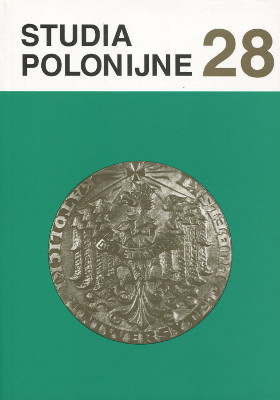Stan diecezji tyraspolskiej pod koniec XIX wieku i jej odrodzenie na początku XX wieku. Misje Ludowe
The State of the Tyraspol Diocese at the End of the Nineteenth Century and its Revival at the Beginning of the Twentieth Century Popular Missions
Author(s): Marian BrudziszSubject(s): Christian Theology and Religion, History of Church(es), Theology and Religion
Published by: Towarzystwo Naukowe KUL & Katolicki Uniwersytet Lubelski Jana Pawła II
Summary/Abstract: The Cherson diocese was established on 8th November 1850 by virtue of a concordat signed between the Russian authorities and the Apostolic See in 1847 and the circumscriptive bull Universalis Ecclesiae cura of 1848 embraced Besarabia (contemporary Moldavia), south Ukraine, Russia, and the Transcaucasia. In 1852, following the order from the Orthodox Church and the Russian government, the capital of the diocese was moved to Tyraspol on the Dniestr, and the diocese itself was renamed to Tyraspol. In 1856 tsarism again moved the seat of the diocese. This time to Saratov on the Volga, which fact was confirmed by the Apostolic See in 1860. Thus the name „Saratov diocese” appeared. The paper presents a „Report on the state of the Tyraspol diocese” made in 1982 by an unknown author. In the introduction of the Report we read that the area of the diocese was 1.227.000 square km, its population numbered 19.320.000, a mosaic of nationalities and religions, a number of Catholics, among others, Germans and Poles. Among the Catholics, the decisive majority was made up by Germans, ca. 200.000, living mainly on the lower Volga and in the province of Cherson; a second place was occupied by Poles, ca. 60.000, and further Armenians (30.000), Georgians, and Russians (Ukrainians). The national mosaic, together with religious mosaic, constituted by Othodox Christians, Protestants, Catholics, and Muslims, was a source of mutual pretensions, or even fights. The bishops of the new diocese were always Germans, for it was mainly for them that the diocese had been established. The „Report” is very critical of the first bishops: Ferdynand Kahn (1788-1864) and Zottmann (1826-1901), and very critical of Bishop Zerr (1849-1934), who in 1902 gave up the bishopric of Tyraspol. The author of the „Report” was also critical of all the members of the consistory and chapter, educators and professors of the theological seminary and the whole of the clergy working in the diocese, including the faithful. Those who earned a positive evaluation were brothers Antonow, Jan and Michał, both Georgians, and Rev. Alexander Boos, a German who had long been the theological seminary's rector.The religious revival in the diocese was owed to Bishops Edward Ropp (1851-1939), and especially Józef Kessler (1862-1933). The latter was the last bishop of the Tyraspol diocese. From 1904 on he worked on a versatile revival of the diocese, where he invited Polish and Austrian Redemptorists, and Bernardines who in the years 1907-1909 conducted almost 38 parochial recollections, 22 for Poles, and 16 for Germans.
Journal: Studia Polonijne
- Issue Year: 2007
- Issue No: 28
- Page Range: 79-106
- Page Count: 28
- Language: Polish

